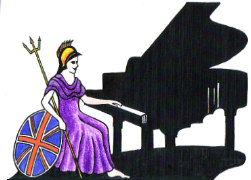Teachers, Accompanists and Piano Entertainers in the UK

UK Piano Page

17a Electric Ln
Brixton, London SW9 8LA
England
South London Piano Moving is a friendly and
20 Red Lion St
Holborn, London WC1R 4PQ
England
North London Piano Moving professional team can
Woodacre Farm
Warrington Road
Lymm, Cheshire WA139BT
England
As well as a large selection of New and
10 Portman Square
Baker Street
Marylebone, London W1H 6AZ
England
94 Kingston Road
Wimbledon
Merton, London SW19 1LA
England
Music Festival for performers and guests Our 10th
18-06-2022 12:30PM
The Morecambe Bay Piano Group was set up to extend
11-12-2021 01:00PM
The Morecambe Bay Piano Group was set up to extend
08-01-2022 01:00PM
The Morecambe Bay Piano Group was set up to extend
12-02-2022 01:00PM